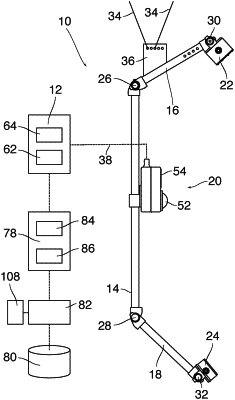| CPC A01K 61/13 (2017.01) | 21 Claims |

|
6. A system for external fish parasites monitoring in aquaculture, the system comprising:
a camera (52) submerged in a sea pen (40) suitable for containing fish (72, 74), the camera being arranged for capturing images of the fish;
and an electronic image processing system (78) configured for identifying external fish parasites on the fish by analyzing the captured images, characterized by an electronic control system (12) configured to
distinguish between at least two different classes of external fish parasites which differ in difficulty of recognizing the external fish parasite;
calculate image quality metrics for each captured image, the image quality metrics permitting to identify the classes of external fish parasites for which the quality of the image is sufficient for external fish parasite detection;
determine, for a particular image, based on the image quality metrics for that particular image, which different classes of external fish parasites can be detected in the image;
establish separate detection rates for each class of external fish parasite distinguished;
wherein the detection rates for a particular class of external fish parasite are established using only images that have been determined to have sufficient image quality metrics such that parasites of that class can be detected.
|